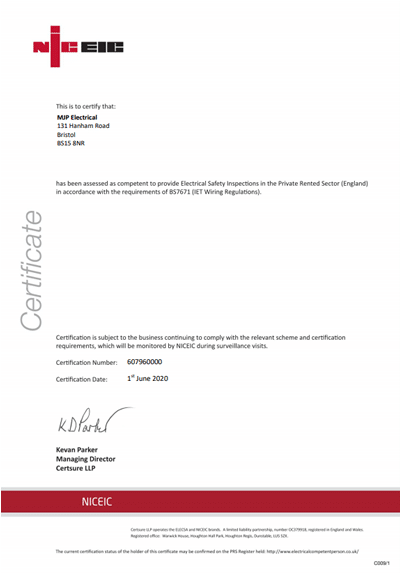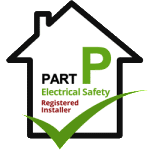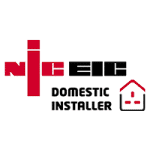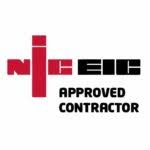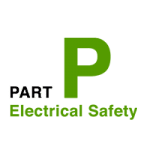EICR's Bath
Electrical Inspection Condition Reports
Electrical Safety Experts
On average, there are 27 electrical fires that affect families and communities every week—that’s about 4 per day. MJP Electrical has provided homes with safe comfort options for years. Now, we’d like to bring that safety to you. Sleep without fear of electrical devastation with MJP Electrical!
Our local operation allows us to keep our rates affordable. Here at MJP Electrical, we believe that safety should be easily accessed by all.
Our business is approved by NICEIC, and our team is trained to the highest of standards. You can put your full trust in MJP Electrical Service LTD for all of your electric needs.
A Professional EICR Service
Commercial, domestic and landlord EICR testing, otherwise known as an Electrical Inspection Condition Report (EICR) or periodic electrical testing, is a full-scale inspection of your electrical systems and installation.
Five Yearly Electrical Checks
From 1st June 2020, private landlords in England will be required to have the electrical installation in their rental properties checked by a qualified electrician to ensure that they are safe.
This means that:
- Electrical installations must be inspected and tested prior to the start of a new tenancy from 1stJuly 2020
- Checks must be carried out on any existing tenancies by 1stApril 2021
These checks must then be carried out on a five yearly basis.
A copy of the most recent electrical safety condition report (EICR) must be provided to both new and retained tenants.
Book online!
Use our automated booking service to accept and schedule your EICR immediately, QUICK and EASY!
Why get an EICR inspection by us?
Safety
We are certified and approved by NICEIC and trained to the highest standards, meaning that you can put your full trust in us.
24/7 Response
Our team of Electricians are on hand 24 hours a day, 365 days of the year for your electrical emergency.
Affordable
We offer a premium service at affordable prices without compromising on quality for your peace of mind.
Reliable
Book a call-out at a time that is convenient to you. Our Electricians always call ahead to make it easier for you to plan your day.
FREE Download
Download our FREE Guide - The Landlords Guide to Electrical and Fire Safety in the UK
Our guide covers the causes of electrical hazards and fires, tell-tale signs that your home may be at risk along with the consequences of what could go wrong if you have faulty or dangerous wiring or appliances.
Take a look at your free guide, The Landlords Guide to Electrical and Fire Safety in the UK today.
Reviews
Hundreds of happy customers
- Small job replacing a cooker switch. Very professional job sorted within the hour very impressed, would definitely recommendread moreread less
 Jenny Geddes4/24/2024Full rewiring now completed and we couldn't be more pleased. Very professional and efficient. Couldn't fault anything, a very high quality job. Respectful of property and mess minimal considering scale of job. Always punctual with excellent communication. Special thanks to Ross and Dan who are exceptional. Thanks also to Ash and Laurie for continual updates, and to Mark who should be very proud of his business. Highly recommend this company.read moreread less
Jenny Geddes4/24/2024Full rewiring now completed and we couldn't be more pleased. Very professional and efficient. Couldn't fault anything, a very high quality job. Respectful of property and mess minimal considering scale of job. Always punctual with excellent communication. Special thanks to Ross and Dan who are exceptional. Thanks also to Ash and Laurie for continual updates, and to Mark who should be very proud of his business. Highly recommend this company.read moreread less val osborne4/23/2024
val osborne4/23/2024 - Great service! Really friendly and did a great job! Spoke to the a member of the company who was able to give me a detailed quote and Greig fixed our issue super fast when we came out.read moreread less
 Sophia Antoniou4/19/2024Very happy with MJP. Booking process was easy and efficient and Connor did a great job.read moreread less
Sophia Antoniou4/19/2024Very happy with MJP. Booking process was easy and efficient and Connor did a great job.read moreread less John Cowen4/19/2024
John Cowen4/19/2024 - Fantastic service from start to finish.read moreread less
 Marc Menear4/18/2024Great service, Jon was really helpful and his work was exceptional. Really pleased.read moreread less
Marc Menear4/18/2024Great service, Jon was really helpful and his work was exceptional. Really pleased.read moreread less Chris Elliott4/17/2024
Chris Elliott4/17/2024 - Very competent company which employs excellent engineers. Thank you.read moreread less
 David Cryer4/12/2024Excellent service in carrying out a few electrical jobs around the house. Quick and efficient response and contact at every stage, definitely recommend and will use again in the future. Many thanksread moreread less
David Cryer4/12/2024Excellent service in carrying out a few electrical jobs around the house. Quick and efficient response and contact at every stage, definitely recommend and will use again in the future. Many thanksread moreread less Sophie Kavanagh4/06/2024
Sophie Kavanagh4/06/2024 - Efficient service . Informative and attentive. Chris was very polite and professional.read moreread less
 Julie Coulson4/05/2024Efficient and friendlyread moreread less
Julie Coulson4/05/2024Efficient and friendlyread moreread less Anna Keen4/05/2024
Anna Keen4/05/2024 - Great response time and very professional. Would highly recomendread moreread less
 kelly waller3/26/2024Very quick response time, extremely polite and professional, excellent work, problem identified and solved in less than an hour and everything left tidy and orderly. All this on a Sunday morning! Great work and I will happily use them again.read moreread less
kelly waller3/26/2024Very quick response time, extremely polite and professional, excellent work, problem identified and solved in less than an hour and everything left tidy and orderly. All this on a Sunday morning! Great work and I will happily use them again.read moreread less Teresa Patten3/24/2024
Teresa Patten3/24/2024 - Top service as always, thank you.read moreread less
 Kirstin West3/21/2024Quickly and competently done I would recommend this company for similar home electrical workread moreread less
Kirstin West3/21/2024Quickly and competently done I would recommend this company for similar home electrical workread moreread less robert stenner3/20/2024
robert stenner3/20/2024 - Great job! The young gentleman Dan provided a very kind and professional service, do appreciate it!read moreread less
 Yong Sun3/20/2024Booked online turned up on time quoted , did what they said more than I can say with my experience with most sparkysread moreread less
Yong Sun3/20/2024Booked online turned up on time quoted , did what they said more than I can say with my experience with most sparkysread moreread less Ry Peake3/19/2024
Ry Peake3/19/2024 - Quick response, excellent, professional electrical work. Solved problem. Thank you.read moreread less
 Caroline3/15/2024An excellent service. Great communication between the company and ourselves. We needed items PAT testing, this was done very efficiently. Polite friendly staff. Definitely recommend.read moreread less
Caroline3/15/2024An excellent service. Great communication between the company and ourselves. We needed items PAT testing, this was done very efficiently. Polite friendly staff. Definitely recommend.read moreread less TIA HARRIS3/15/2024
TIA HARRIS3/15/2024 - As trade companies go, they were very customer centric. Commutation was great and speed even better. Appreciate the emergency help.read moreread less
 Tom Kavanagh3/15/2024Exceptional service. Friendly and efficient with great communication throughoutread moreread less
Tom Kavanagh3/15/2024Exceptional service. Friendly and efficient with great communication throughoutread moreread less Emma Harris3/14/2024
Emma Harris3/14/2024
Frequently asked questions
Let us answer your important questions
A: An electrical installation condition report (EICR) identifies any damage, deterioration, defects and/or conditions which may give rise to danger along with observations for which improvement is recommended.
A: Prices are as follows:
- One bedroom flat – expect to pay from £120.
- Two bedroom flat – expect to pay around £120 to £150.
- Three bedroom flat – costs are between £180 and £210.
- One to two bedroom house – inspection costs between £150 and £180.
- Three to four bedroom house – expect to pay anything between £200 and £250.
- Five bedroom house and larger – costs start from £300 and will depend on the size of the house.
A: From 1st June 2020, private landlords in England will be required to have the electrical installation in their rental properties checked by a qualified electrician to ensure that they are safe.
This means that:
• Electrical installations must be inspected and tested prior to the start of a new tenancy from 1st July 2020
• Checks must be carried out on any existing tenancies by 1st April 2021
These checks must then be carried out on a five yearly basis.
A copy of the most recent electrical safety condition report (EICR) must be provided to both new and retained tenants.
The landlord is responsible for making sure that the person who completes the check is suitably competent. Using an electrician or firm that is a member of an accredited registration scheme operated by a recognized body will give you the confidence that this has been achieved.
A: Electrical installations are not immune to the process of ageing, deterioration and even general wear and tear. For this reason, an EICR should be conducted at regular intervals. British Standard BS 76719 (IET Wiring Regulations) recommends the following intervals for businesses, landlords and homeowners:
- Businesses – employers are recommended to have an EICR test undertaken once every five years.
- Buy-to-let or rented property – landlords should have an EICR test done every five years or when new tenants enter the property.
- Homeowners – an EICR is recommended every 10 years. If the property has a swimming pool, this should be tested once every year.
A: Electrical installation condition report
As a homeowner, you want the peace of mind that the electrics in your home are safe. The building regulations require your electrical installation is tested every ten years if you own your home, and every five years if you are a landlord or live in rented accommodation.
The Electrical Installation Condition Report (EICR), previously known as the Periodic Inspection Report, is carried out by a qualified electrician and involves the following:
- Inspection of earthing system and supply characteristics.
- Inspection of the consumer unit or fuse board.
- Inspection of methods of installation and wiring.
- Inspection of a sample of switches, sockets and other fixtures including light fittings.
- Checking and testing the polarity of the installation.
- Checking and testing earth continuity of circuits.
- Checking and testing the integrity of the insulation of cabling
- Testing protective devices to ensure they work to protect you and your family from electric shock.
A: around 3-4 hours
It is generally recommended that an EICR is carried out every ten years (five for privately rented properties) or when there is a change of occupancy in a dwelling. Typically an EICR will take around 3-4 hours to complete, depending on the size of a property and the number of circuits requiring testing.
A: An EICR will check if your property’s electrics have any faults that cannot be identified through a visual check. A number of faults may occur, such as electrical circuits being overloaded or overheating during use. If any electrical circuit is not properly installed – for example, without earthing or bonding to safely secure the electrics – it may potentially cause a fire or shock hazard. EICR testing will identify any defective electrical work within the system.
A visual check can also be performed to give you a quick analysis of how safe your property is. This will look for broken sockets and light switches, damaged cables and scorching / burn marks as a result of overloading the power outlet. It will also look at the residual current device (RCD) for the circuits that operate the bathrooms and gardens. It is recommended that this visual check is completed at regular intervals in between the more in-depth EICR tests.After the test has been completed, the testing engineer will produce a certificate for you. It will detail any damages, deterioration, defects or other dangerous conditions. It will also highlight anything that doesn’t match the present day safety standards and things that might put people at risk.Should the EICR test come back as negative, the EICR will be classed as “unsatisfactory” meaning that the required work needs to be done, without delay, to remove the risk to those living or working at the property. As well as returning an “unsatisfactory” result, the report will detail which electrical system(s) failed the test. Work required is classified using the following codes:</p?
- C1 – ‘danger is present’, risk of injury is likely and immediate action is required.
- C2 – potentially dangerous and remedial action is needed urgently.
- C3 – improvement to your electrical system is recommended. C3 is the only classification code that can appear on a report and still pass the EICR test.
Once your electrical system has passed the inspection fully and any urgent remedial work has been completed, you will be provided with an EICR Certificate of Safety, giving you peace of mind that your electrics are safe.
A: While there isn’t any legislation that specifically says homeowners, businesses or landlords should have an EICR certificate, laws such as the Landlord and Tenants Act (1985) and Health and Safety at Work Act (1974) outline the responsibilities that landlords and employers have with regards to the safety of tenants and employees respectively. The Electricity at Work Regulations 1989 also require that precautions are taken against the risk of injury sustained from electricity used in work activities.



